
An armored personnel carrier was damaged and disabled during the coup events of July 15, 2016.
Abdullah Bozkurt
The spy who runs Turkey’s clandestine and secretive operations in Libya helped orchestrate a false flag coup attempt in July 2016 to prop up the embattled regime of Turkish President Recep Tayyip Erdoğan and set up the opposition for mass persecution, a Nordic Monitor investigation has discovered.
Sadık Üstün, an operative of Turkey’s National Intelligence Organization (MIT), played a key role in organizing Islamist groups in Libya in 2011 and later returned to Turkey to run political operations on behalf of President Erdoğan. He helped plot the failed coup, entrapped generals in military operations that had nothing to do with a coup, framed the mobilization of troops under emergency terror threats as a putschist attempt and accused Erdogan’s foe, the unsuspecting Gülen movement, of being coup plotters. He went back to Libya again in order to shore up support for the Erdoğan-aligned Libyan leadership and is currently in charge of intelligence operations in the North African country.
Üstün’s role in the false military bid to purportedly oust Erdogan, which was supposed to be secret, was exposed when he rushed into one major timing mistake. He prematurely identified the alleged leader of the putschists, triggering closer scrutiny of his role in the July 15 events. During the court hearings of suspected putschists who knew him well, many came forward revealing further details of his role in the false flag. Immediately after the coup events, the Erdoğan government sent him off to Australia as a diplomatic attaché, out of the reach of defense attorneys who wanted to put him on the stand and cross-examine him. He never testified in court despite repeated motions filed by defense lawyers in multiple court cases and was not summoned to testify before the parliamentary committee set up to investigate the failed coup.
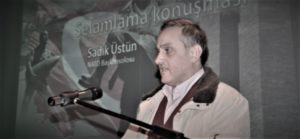
In a major blunder, Üstün, a military man-turned-spy, prematurely named a decorated general, senior member of the Supreme Military Council (YAŞ) and former Air Forces Commander Akın Öztürk, as the leader of the putschists when the general was still at his daughter’s home, located some four or five kilometers from Akıncı Air Base, the alleged headquarters of the putschists. Öztürk, who had no affiliation with the Gülen movement, was completely unaware of the plot unfolding around him and was playing with his grandchildren on the night of the coup attempt.
According to the journal (Ceride) kept at the 8th Corps Command to record events in real time by officers on duty, at 23:17 hours on July 15, Üstün called Lt. Gen. Yılmaz Uyar of the command, saying this was a Gülenist coup and that Gen. Öztürk was the leader. This is the first known record that identified the coup attempt as Gülenist and the well-respected general as its leader when nobody knew what was going on and people were trying to make sense of the military mobilization that took place in Istanbul and Ankara. Many generals and admirals were on vacation, away from their posts, and some of the top brass were attending wedding ceremonies.
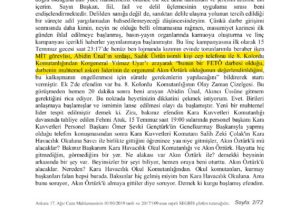
Some 20 minutes after this phone call to the 8th Corps Command, Üstün had his close buddy, Air Forces Commander Abidin Ünal, who was at a wedding in Istanbul, call Öztürk to request that he go to Akıncı Air Base and check out what was going on there. When he went, Öztürk saw Chief of General Staff Hulusi Akar, who told him that some officers had attempted to stage a coup and asked him to convince them to give up. In his testimony to the court, Öztürk explained that Akar, the top commander, was not held hostage, was not restrained and could easily have gone out and ordered his men to halt all activities. It would have been more effective if the top commander himself made the effort. He found it bizarre that as a general who had no official mandate over troops, he was asked to talk to the alleged putschists stationed at 143rd Squadron at the base. In hindsight, he realized that he had been pushed into the middle of the events and deliberately and made a fall guy.
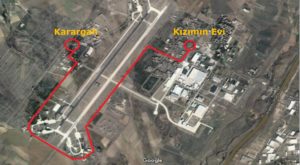
Multiple witnesses testified in several court cases that Öztürk had nothing to do with the coup attempt and had tried to bring some order to the chaotic events, yet the prosecutors and courts had ignored all these statements and the evidence supporting his innocence. On July 21, 2016 the General Staff even issued a formal statement clearing him of coup allegations and corroborating Öztürk’s own statement, but that statement was later removed from its website without explanation. He was taken to a black site for torture and beatings that continued for days, and his fingers were even burned with acid at one point in time. He was forced to sign a false confession that had already been released in the early morning hours of July 16 by state news agency Anadolu to create the perception that he was the leader of the putschists and had admitted to everything. To the surprise of the plotters, the commander refused to sign the document despite the torture he endured, and Anadolu had to retract the false news report and run a correction.
Testifying for the first time on March 1, 2019 after a long pre-trial detention in solitary confinement, Gen. Öztürk revealed how he was set up and dragged into the middle of events by MIT. He named Üstün as the man behind the plot and Air Forces Commander Ünal as his accomplice. Without an independent judiciary and in the absence of critical media, Öztürk’s plea of innocence fell on deaf ears. The Turkish intelligence agency’s fabricated storyline, narrated by Üstün, was repeated by Erdoğan and other government officials, while the coup attempt was used as a pretext to transform Turkey’s regime into a one-man rule.
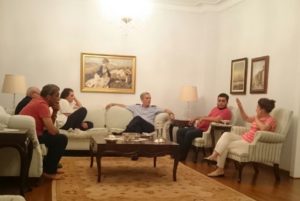
Turkey’s rulers had another motivation for sidelining Öztürk. President Erdoğan and the MIT leadership led by Hakan Fidan, his confidant, had been facing stiff resistance by pro-NATO generals, especially Öztürk, who held a key seat as the senior member of the Supreme Military Council (YAŞ). The generals did not see an exit strategy from the Syrian quagmire and insisted on the coordination of any Turkish military activity with NATO allies and demanded a clear mandate under the UN Charter for the cross-border operation. The fake coup helped break that resistance in the military with the purge of nearly 70 percent of all flag officers in NATO’s second largest army.
WHO IS SADIK ÜSTÜN?
Üstün’s military record, obtained by Nordic Monitor, shows that he had served mainly in logistics in the Turkish military’s special forces command, General Staff headquarters and the Land Forces Command. Between 1999 and 2002 he was assigned to serve at NATO Supreme Headquarters Allied Powers Europe (SHAPE) to work on transportation, logistics and coordination of troop movement. He was the cadet regiment commander for the Turkish Military Academy between 2004 and 2006. The last post he served at before his retirement on October 2, 2009 was the Land Forces Logistical Command in Ankara.

Although as a colonel he served as the prestigious cadet regiment commander, he was one of the few officers who were not promoted to general after serving in this position under Akar, the then-commander of the academy (Kara Harp Okulu). He never accepted being sidelined and pursued a vindictive agenda to exact revenge on the senior military leadership that he thought had stolen his future.
According to Üstün’s own account, which was told in confidence to Fırat Alakuş, a staff colonel who led the Special Forces Command team, when the two were serving in Libya on a special assignment, Üstün was denied promotion by the top brass, comprising mainly neo-nationalist, Kemalist generals, when he refused to mobilize cadets against the Erdoğan government at a protest rally. The order was given some time after 2004 when Gen. Yaşar Büyükanıt was commander of the Land Forces. Büyükanıt later became chief of general staff, in July 2006, and Üstün was punished for not complying with Büyükanıt’s wishes.
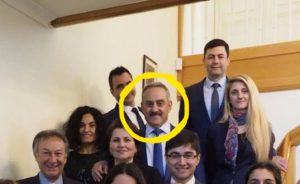
Sharing the details of his conversations with Üstün during his testimony during a hearing on March 20, 2019 at the Ankara 17th High Criminal Court, Alakuş, a suspect in the coup attempt, recalled the scandal that involved Lt. Gen. Reha Taşkesen, who was found to have been involved in an affair with a female military officer in a breach of the code of military conduct. Taşkesen, who was commander of the military school regiment, had to resign in 2006 due to the scandal, and Üstün was rumored to have been behind the leak of a voice recording between Taşkesen and his lover.
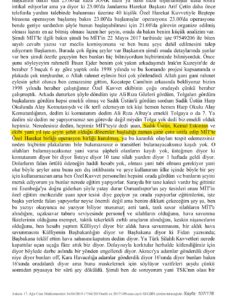
He was brought into MIT after Fidan, an Erdoğan confidant and pro-Iranian Islamist figure, was appointed head of MIT in 2010. Fidan set up a separate and parallel intelligence service within MIT with the help of Üstün, who brought his expertise in special operations, coordination and logistics. Üstün’s special assignment in MIT was revealed during the coup trials when suspects who knew him from his military days revealed why he was selected by Fidan.
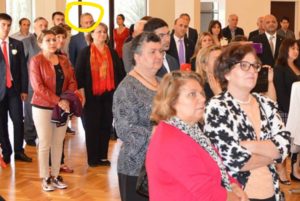
He set up a Special Forces unit within the agency in a rivalry with the Turkish Armed Forces Special Forces Command. He recruited many from the military and had them transferred to MIT. This parallel special force unit was revealed by Staff Col. Bilal Akyüz of the Land Forces Command during a hearing on April 17, 2019. Akyüz testified that he saw Üstün and former colleagues from the military special forces unit during the funeral of Lt. Col. İhsan Ejder, who was killed in a terrorist attack in October 2015. He recalled his conversation with Üstün and others who said they had resigned from the military and joined MIT for a newly established special forces section. In other words, the spy agency set up a ghost special forces unit under Üstün to compete with the Turkish military.
When Erdoğan found himself incriminated in major corruption and Iran’s Quds Force investigations in 2013 and 2014, he rushed to amend the intelligence law, giving MIT sweeping powers to obtain information from all government institutions including the military and the police. The bill, which sparked criticism that Turkey was turning into an intelligence state like Syria and its al-Muhabarat, was pushed through parliament by Erdoğan’s ruling Justice and Development Party (AKP). One of the most important changes was the establishment of the National Intelligence Coordination Board (Milli İstihbarat Koordinasyon Kurulu, or MİKK) under the leadership of Fidan. The board is effectively run by Üstün, who collects all the intelligence from other government branches.
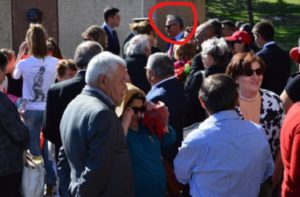
The main assignment given to Üstün was to profile officers, especially at the level of general, admiral and colonel, and help the government purge all officers, mostly pro-NATO individuals, who might not subscribe to the same political Islamist ideology as the government. Working closely with Akar and Ünal, he created a fake list of people who were allegedly selected for participation in the coup. The list, which was full of inconsistencies and mistakes in rankings and designations, was nevertheless the basis of purges in the Turkish military. Adnan Tandıverdi, the head of Turkish paramilitary group SADAT and an advisor to Erdoğan, also helped him compile the lists and mobilized the SADAT militia on the night of the coup attempt.
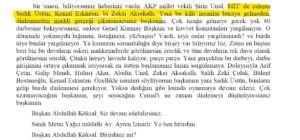
MIT’S MEDIA CAMPAIGN
Another of Üstün’s assignments on the night of the coup attempt was to shape the government narrative and push it through designated media outlets. The coordinator of the false flag operation on the military side was Maj. Gen. Zekai Aksakallı, the then-commander of the elite Special Forces Command (ÖKK). In his statement to the prosecutor on December 6, 2016, Aksakallı admitted that Üstün called him and said he could set up an interview for him to speak on television.
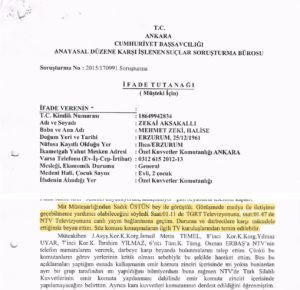
The first TV network interview Üstün arranged was on TGRT (Türkiye Gazetesi Radyo Televizyonu), an outlet known among professional journalists in Turkey as a hub for operatives planted by MIT agents under the guise of journalists, cameramen and crew members. Aksakallı appeared on the TGRT Haber station at 1:11 a.m. on July 16 and later was on the air with NTV at 01:47 a.m. He pointed out that Gülenists (parallel treacherous networks, or paralel ihanet şebekeleri) were behind the coup attempt and promised that the military would soon contain the mutiny.
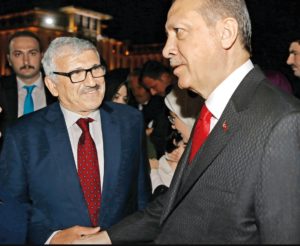
The man used by Üstün to run the media campaign on the TGRT network was Nuri Elibol, a former soldier who ran secret operations in Azerbaijan against Armenia. For this secret mission, Elibol was later rewarded with the post of Ankara representative for the Ihlas media group, which owned the TGRT brand, when he had no experience in journalism. In fact the close relationship between the two men was exposed when Elibol wrote an article about Üstün, describing him as a patriot and a close friend. In his article he revealed how Üstün called him on the night of the coup attempt to make arrangements for interviews for military commanders, and the two worked out the details on how and which outlets to use for interviews with senior commanders. Elibol also revealed that he received a call from Üstün in the early morning hours of July 16, when he was at the office of the Prime Ministry, where Chief of General Staff Akar had gone.
Üstün’s calls to Aksakallı as well as other selected officers who were urged to go on air and speak to the nation using scripted talking points were found to be quite strange. There weere no institutional mechanisms to warrant such contact, and it violated established rules in the military. On December 14, 2018 Halit Kazancı, ÖKK’s lieutenant general, testified in court that Üstün had no authority to give such orders to generals in the military and could not instruct officers to make pubic statements to media outlets.
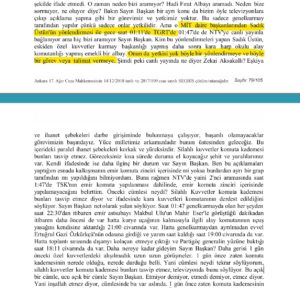
“Only the General Staff has authority to do so because they have the mandate,” he said, questioning how MIT agent Üstün could make such calls and arrange TV interviews. He also noted that Üstün knew everything and was planning an entrapment scheme for generals and that Aksakallı simply read the scripted statement given to him by MIT. “Otherwise he would not dare to make such a statement,” Kazancı underlined, highlighting the violation of established protocols and regulations by speaking to the media on the record.
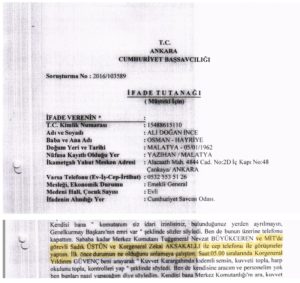
While Üstün was taking care of the media campaign from the military side, Nuh Yılmaz, an aide to the head of the intelligence agency, was working with several journalists to push the government narrative, which had been prepared days earlier. Yılmaz used to work for the Erdoğan family-owned Sabah daily before he was brought to the agency by Fidan as a press advisor in 2013. Yet his real mandate was to organize media campaigns against Erdoğan critics using the resources of the intelligence agency. He directed the media appearances of government officials, fed misinformation to the networks and planted fake news on websites funded by the agency.
CNN TÜRK ANCHOR WAS WORKING FOR TURKISH INTELLIGENCE
Yılmaz worked with Hande Fırat, a Turkish intelligence asset who served at the time as the Ankara bureau chief for Doğan TV, which owned CNN Türk and Kanal D, and a TV anchor who made a name for herself after talking to Erdoğan via FaceTime on the night of the abortive putsch, during which conversation the Turkish president called on his supporters to take to the streets to show their opposition to the coup attempt. Interestingly, while Erdoğan’s call was still going on with his video feed transferred to the network via Fırat’s mobile phone in front of live cameras at 00:24 hours on July 16, an incoming call from Yılmaz was displayed for 10 seconds on the iPhone screen starting at 1 minute, 12 seconds of the president’s statement. It took some time for Fırat to figure out what to do before pressing the reject button to get rid of Yılmaz’s name from the screen, send him to her voice mail and bring the picture of Erdoğan back to the forefront.
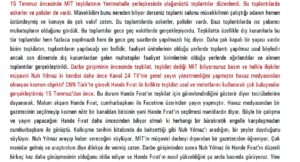
Doğan TV’s Ankara Bureau Chief Fırat’s connections to the Turkish intelligence agency were confirmed by two sources. One was through defense attorney Ayten İzmirli, who represented a former MIT agent who was jailed in the aftermath of the coup. She said her client had confirmed that Fırat met Yılmaz multiple times using unique evasive and secretive methods employed by the agency in its clandestine operations, which suggested that the Ankara bureau chief was working on an assignment given to her by MIT.
İzmirli’s client also witnessed unusual meetings at MIT headquarters in the Yenimahalle district of Ankara in the weeks and days leading up to the coup attempt. The client, whose office was located next to a meeting room in MIT headquarters, stated that the meetings were attended by police and military officers as well as some foreigners. They were unusually long and lasted into the late hours. The client believed that the meetings were part of preparations for the false flag coup.

The second piece of information that confirmed Fırat’s links to MIT came from two senior MIT officials, Erhan Pekçetin and Aydın Günel, who were captured by the outlawed Kurdistan Workers’ Party (PKK) in Iraq’s Kurdish city of Sulaymaniyah on August 4, 2017. Pekçetin was the head of the department responsible for ethnic separatist groups operating outside of Turkey’s borders, while Günel used to run the human resources department at MIT, otherwise known as the service responsible for developing human intelligence in the field and bringing in new recruits and informants. The MIT officials admitted that Fırat had a direct connection to the intelligence agency at the leadership level. The pro-PKK Fırat news agency (ANF) published video footage along with the confessions of the captured MIT officials.
SPY AGENCY LEFT TOO MANY TRACES, MADE BLUNDERS
MIT agent Üstün used several key military officers in the scheme to lay a trap for unsuspecting officers who thought they were simply following the orders on emergency mobilizations against a terrorist threat or running drills on the night of the coup. On May 13, 2019 Doğan Özturk, the head of the Project Development Unit in the General Staff’s Strategic Transformation Department, told the court that Üstün established close ties with Abidin Ünal, the Air Forces commander, although the former was a colonel in the Land Forces and the latter a general in the Air Forces. He questioned why Üstün had a 30-minute phone conversation with Ünal on July 14.
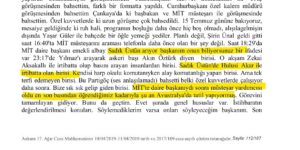
Strangely enough, Üstün also talked to Akar, the chief of general staff, at 18:30 on July 15. This account was verified by the testimony of Ramazan Gözel, a staff colonel who served as chief of staff at General Staff headquarters. He told the judges at the Ankara 17th High Criminal Court on April 10, 2019 that Üstün had a close relationship with Akar, who was later promoted to defense minister in the Erdoğan government. He said Üstün was sent to Australia as a reward for his services during the coup events.
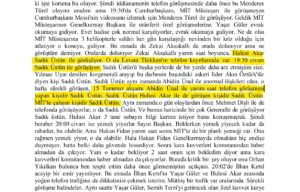
After hammering out the coup narrative through designated media outlets, Üstün also called Maj. Gen. Ali Doğan İnce to coordinate the detention of generals and colonels in Land Forces Command headquarters. İnce, whose office was located at the Central Officers Club (Ankara Merkez Orduevi) in Ankara, was in charge of the Land Forces Inspection and Assessment unit. In his statement to the prosecutor on February 24, 2017 he said he had multiple phone conversations with Üstün and Aksakallı. In other words, Turkish intelligence, not the prosecutors, decided who the suspects were and who should be detained and charged with coup plotting.
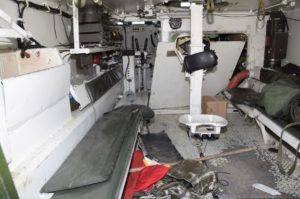
Another blunder made by MIT was exposed by Süleyman Karaca, a former colonel. He revealed during a hearing on June 18, 2019 that the military journals at the Gendarmerie Special Forces Command Operations Center (JÖHAK Harekat Merkezi) were apparently doctored to reflect the government’s official narrative. Stating that he had personally worked on drafting military journals for five years, Karaca told the court that the dates and hours were wrongfully entered into the journal that recorded events on July 15 and 16. The last authentic entry to the journal was at 00:23 hours on July 16, and all the entries after that were hurriedly fixed in the early morning hours. He claimed that the journal was rewritten under orders so that it would not raise suspicions about the official narrative and would hide traces of the real masterminds behind the coup attempt.
Describing Üstün as running a shadow intelligence apparatus within the intelligence agency, Karaca highlighted that Üstün was recorded as having talked to Cemal Alataş, the commander of JÖHAK, as the 29th entry in the journal. “He [Üstün] is the person responsible for the MIT-TSK [Turkish Armed Forces] coordination of the staged coup. They also wrote this in the journal. Now a fake document has been produced,” Karaca testified, adding that people whose signature appeared on this doctored journal would be held to account one day when the rule of law is restored in Turkey.
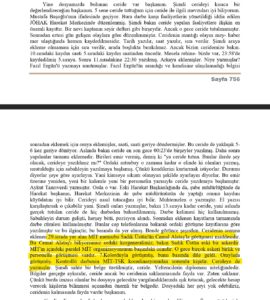
More inconsistencies in the coup narrative were raised in the courtroom by Ayten İzmirli, the attorney for several defendants in coup trials. She told the Ankara 23rd High Criminal Court at an April 1, 2019 hearing that what really happened on the night of the coup would not be revealed unless MIT agents Üstün and Kemal Eskintan as well as former ÖKK commander Aksakallı were summoned by the court to testify and the defense team was allowed to cross-examine them. In a separate coup trial case, İzmirli filed a motion on May 17, 2019 with the Ankara 17th High Criminal Court asking authorities to subpoena Üstün as a witness so that she could cross-examine him. But the judges of the court rejected the motion, protecting Üstün from possibly incriminating himself on the witness stand.
On July 14, 2016, a day before the coup attempt, Üstün talked to Ünal at 17:00 hours for 20 minutes. The two also met in person for secret talks. These were verified by phone records and witness statements and confirmed by Ünal when he was finally cross-examined by attorney İzmirli two years after the trial started. Although he often referred his prior statements and declined to answer many questions from the defense, Ünal admitted that he knew Üstün and even inadvertently revealed that the MIT agent was currently assigned abroad, classified information that only a few people knew.
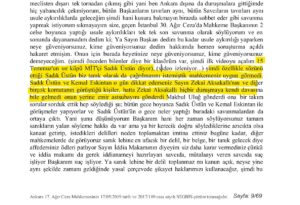
Referring to the admission of the former Air Forces commander in this cross-examination at a hearing held February 14, 2019 Maj. Adnan Arıkan told the judges of the Ankara 17th High Criminal Court that Ünal was complicit in the false flag and coordinated the plot with MIT agent Üstün. He said it was bizarre and unusual for Üstün, a former colonel, to talk to a general and was a clear breach of established protocols. Likewise, Üstün’s conversation with Akar on July 15 at 18:32 hours, before any military mobilization took place, was also found to be strange.
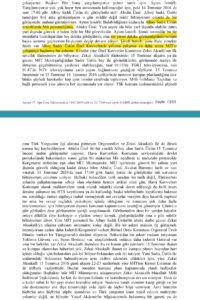
Veysel Kavak, the general secretary of the Air Forces who planned the itinerary of the Air Forces commander, testified at the Ankara 4th High Criminal Court on March 12, 2018 and confirmed that Üstün had direct access to Air Forces commander Ünal.
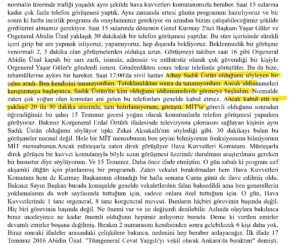
He also confirmed that on July 14 at around 15:00 hours, Yaşar Güler, the number 2 at the General Staff, and Ünal had a 30-minute phone conversation, which he described as unusually long. “It was longer than usual phone conversations, which ordinarily take about two or three minutes,” he noted. After Ünal hung up, he sent a yellow envelope without a signature, addressee name or seal to Güler through a trusted courier, Kavak recalled, also finding it bizarre. Güler and Ünal had another long phone conversation after the envelope was delivered to Güler. At 17:00 hours MIT agent Üstün called the general secretary’s phone from a civilian line, introducing himself as a colonel and saying he wanted to talk to Ünal. “I did not know him … the commander [Ünal] usually did not accept such unplanned phone calls because he had been quite busy. But he accepted [Üstün’s] call, and they talked for 20 or 30 minutes,”. Kavak testified, adding that he did not know Üstün was working for MIT at the time. He underlined that it was against established rules for the Air Forces commander to talk to a lower ranking MIT agent when he could directly talk to the head of the intelligence agency, Fidan.
TURKISH PROSECUTOR LISTED EVENTS BEFORE THEY HAPPENED
Another major blunder the planners of the false flag made was to list the events that took place in the early hours of July 16 before they actually occurred, confirming that the intelligence agency had planned several incidents to make the coup attempt appear real.
According to an official document written by Ankara public prosecutor Serdar Coşkun, who prepared indictments in the coup trials, the events that unfolded on that night were known by Turkish authorities in advance. The document was dated July 16 and time-stamped at 1 a.m., three hours after the coup attempt began to unfold. Yet, the document mentioned events that took place after 1 a.m., which can only confirm that those events were actually planned in advance by operatives of the Erdoğan government, not the putschists. It also laid bare the fact that MIT wanted more bloodshed in the chaotic events.
For instance, the document mentioned the bombing of the Turkish Parliament by warplanes and stated that people were killed. In reality there were two explosions in the parliament, one at 2:35 a.m., and a second at 3:24 a.m. Nobody was killed, and it was not entirely clear that the explosion was actually caused by a bomb dropped from a plane. The damaged site suggested that explosives planted on the site were used to blow up sections of the parliament.
Official document written by Ankara public prosecutor Serdar Coşkun at 1:00 a.m. listed events that happened after the document was written or events that never took place, suggesting that coup incidents were planned by the Turkish authorities far in advance:
Click to access Serdar_Coskun_order_1am_July16_2016.pdf
Another prediction made by prosecutor Coşkun was the raid on some private TV stations by the putschists, but no name was mentioned. On the night of the coup, it was only the Doğan Media Center, which hosts the CNN Türk and Kanal D TV stations and the Hürriyet newspaper, that was raided by pro-coup military troops. The raid on the Doğan Media Center took place at 3:10 a.m., two hours after the paper was written. As mentioned earlier, it was the same media outlet where President Erdoğan appeared for the first time to make a speech to the nation and Fırat, the Turkish intelligence asset, interviewed him.
The document predicted the bombing at the presidential palace five hours before an explosion took place near the palace. The alleged perpetrators who had state-of-the-art F-16 warplanes miraculously missed the huge presidential complex in a national park and hit only a car park and overpass near the presidential complex. These incidents took place at 6:19 a.m. In other words, not only was the timing wrong but also description of the incident and targets was not accurate.

What is more, the document claimed that the presidential palace was besieged by putschists who wanted to storm the building and take it over. Yet, it was later uncovered that only 13 officers, three of whom were high-ranking, and 10 privates went to the palace, which hundreds of security personnel were stationed to protect.
There was also a claim that noise-generating bombs were dropped in Ankara by jets when no such action took place. The noise was generated by a sonic boom from jets that flew at high speed and low altitude. Some incidents mentioned in the document never took place on the night of the coup. For example, the document talked about a siege of MİT headquarters in Ankara and the bombing of the Special Forces Command and Security Directorate’s Intelligence Unit by pro-coup soldiers. The appointment of new officers as chief of general staff and force commanders by the putschists, which were written in the document, never happened.
At a time when no evidence had been collected and the incidents were still unfolding, the document named Turkish Islamic scholar Fethullah Gülen, who has been living in the US since 1999, as the mastermind of the coup.
This document and allegations in it were used as evidence to issue warrants for hundreds of generals, admirals and colonels as well as civilians. It was also presented as evidence in the arrest of thousands of judges, prosecutors, journalists and others. It is clear that the plot by Turkish intelligence was prepared in advance and that the plotters recorded events that either did not take place or happened hours after the key document was generated. The planned events also indicated that the plotters wanted to spark outrage in Turkish society, and that is why they picked targets like parliament, which did not make an sense for alleged coup perpetrators who would instead want to keep public opinion on their side in the post-coup period.
In the end Erdoğan got what he wanted. He consolidated power in his hands, switched the country’s parliamentary regime to an imperial presidency, eliminated generals and admirals who opposed his cross-border military adventures, persecuted the opposition, jailed tens of thousands who had nothing to do with the coup and shut down nearly 200 media outlets.



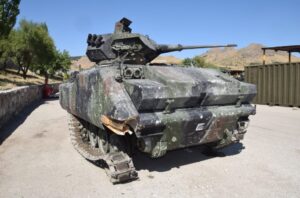 July 14, 2020
July 14, 2020 